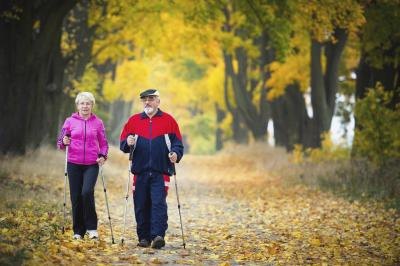
Walking five miles a day can be time consuming, but it’s also an effective way to stay active, get a low-impact workout and form a stronger connection with the outdoors -- or your local treadmill. Depending on how fast you walk and how much you weigh, you could burn upward of 500 calories on a daily stroll.
Your Pace Matters
Walking faster will burn more calories over a set period of time, but it won’t make much difference if you’re going for distance rather than speed. That is, if you were going to walk for 90 minutes every day, you’d burn more calories walking at a speed of 4 mph than at 2 mph, but you’d burn a similar number of total calories if you went for five miles at either speed, even though it would take you longer at the slower pace.
Think of Your Body
Larger people burn more calories. Your weight matters, at least when you’re calculating how useful your workout might be. For instance, a 125-lb. person who walks for 30 minutes at 3.5 mph burns about 125 calories, but a 185-lb. person who does the same walk burns about 178 calories.
Watch Your Speed
The length of time needed to complete your five-mile walk depends on the speed you average along the route. A five-mile walk can burn a few hundred calories, depending on your speed. If you're short on time but still want to meet your five-mile goal, increase your pace. It's typically possible to walk briskly, without running, up to about 4.5 mph.
Increase the Resistance
There are plenty of ways to burn more calories on a daily five-mile walk. One option is to strap on light wrist or hand weights. That will add resistance to your movements and increase your total calorie burn; according to the American Council on Exercise, using 1- to 3-lb. wrist weights during walking increases heart rate by five to 10 beats per minute and boosts calorie burn by 5 to 15 percent. You can also step up part of your walk to a jog, which will burn about double the number of calories that walking does. If you choose to wear wrist or ankle weights, keep them at 3 lbs. or lighter to avoid muscle strain and injury.
www.livestrong.com




No comments:
Post a Comment